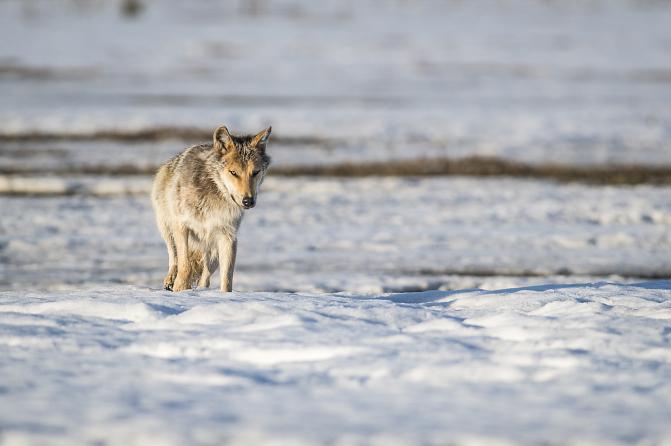Wolf population has increased – people’s fears of wolves have not
A recent study shows that, even though the wolf population has increased in Finland, Finnish people’s feelings and notions of wolves have remained unchanged. Some 35% of all respondents stated that they are afraid or very afraid of seeing a wolf when moving around in nature, which is the same percentage as in 2020.

“The changes are surprisingly small, considering that the wolf population has grown for several years now and wolves have spread to new areas,” says Jani Pellikka, Senior Scientist at the Natural Resources Institute Finland (Luke), who was responsible for the survey.
“After the previous survey, wolves have been a hot topic politically because of the citizens’ initiative to support hunting, among other factors. Furthermore, livestock losses have increased.”
According to Luke, there were most likely 43–49 wolf territories in Finland in March 2020, whereas the corresponding figure was up to 59–64 in March 2024. A wolf territory is a habitat taken over by a couple or pack, which they defend against other wolves.
Wolves split opinions: concerns about the safety of dogs, support for conservation
Parents living in wolf regions consider the risks presented by wolves to their children to be small relative to the risks caused by traffic, accidents, or strangers.
Owners who keep their dogs unleashed in wolf regions have greatest concerns about wolves. Of them, 52% regard wolves at least as reasonable threats to their dogs, whereas the corresponding figure was 43% in 2020. Other factors are also considered to present greater risks to unleashed dogs outdoors, including busy roads and thin ice.
Support for wolf protection has increased in recent years. In contrast, more than a third of all respondents (37%) believe that not enough wolves have been hunted during the last five years. Most respondents have a neutral attitude toward wolf protection (30%) and do not have any strong opinion on wolf hunting or do not consider such an opinion necessary.
People rely on Luke as a provider of information about wolves. Of all respondents, 79% regard Luke as a fairly or very reliable information source. Wildlife agencies and the Police of Finland are also trusted.
Colourful discussions of wolves
People have highly differing experiences and views of wolves. The survey shows that most people living in wolf regions do not regard wolves as any significant risk in their daily lives, whereas livestock farmers and people who hunt with dogs may have significant concerns.
Strong emotions are emphasised in media. Scary and disconcerting stories attract readers and are easy to spread.
“News may give the impression that everyone is concerned about wolves, although in reality many have neutral attitudes or do not follow any public discussions,” Pellikka says.
“The wolf symbolises different things to different people – biodiversity and protection to some, threats, and fears to others. Discussions are inevitably colourful and difficult at times.”
More results and graphs in the survey report: http://urn.fi/URN:ISBN:978-952-380-989-5 (the report is in Finnish, but the abstract is also available in Swedish and English)
Additional information:
Jani Pellikka, Senior Scientist, Natural Resources Institute Finland
jani.pellikka(at)luke.fi, +358 29 532 7544
This is how the survey was conducted: The survey was responded to by 2,000 Finnish people aged over 18 years who live south of the reindeer husbandry area in Mainland Finland. The survey results can be expanded to cover the whole population in question. Of the respondents, 1,000 live in municipalities in which most wolf sightings have been made during the last 12 months.
The survey was conducted in June 2024 using the M3Panel survey application, assigned by the LIFE BOREALWOLF project. The 2024 results were compared with the similar survey conducted in 2020.


